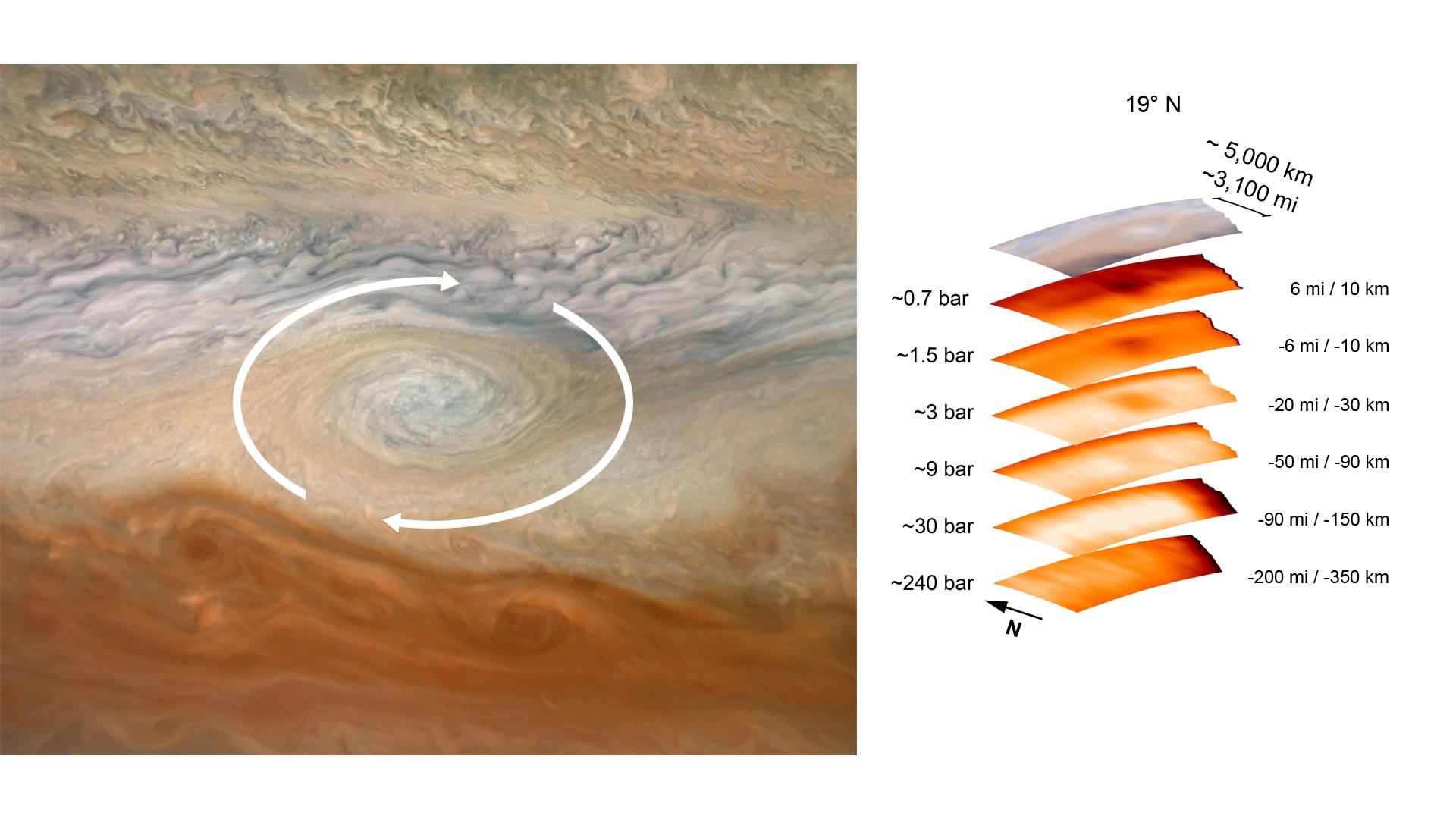
|
A Deep Dive Into a Jupiter Vortex
- Click the image above for a larger view
- Full-Res JPEG (1920 x 1080) (151.8 kB)
- Full-Res TIFF (1920 x 1080) (3.7 MB)
Caption:
The image on the left, taken by the JunoCam imager aboard NASA's Juno spacecraft, has been annotated to depict the clockwise rotation of a vortex at Jupiter. The graphic on the right highlights the large-scale structure of the feature as seen by the spacecraft's microwave radiometer (MWR) instrument. Data for the image and the microwave radiometer results were collected during a low flyby of Jupiter that took place on July 21, 2019.
The radiometer data was acquired from the six channels of MWR. Each MWR channel peers progressively deeper below the visible cloud tops. In fact, the MWR instrument enables Juno to see deeper into Jupiter than any previous spacecraft or Earth-based observations.
Unlike Earth, which as a solid surface, Jupiter is a gas giant with no discernable solid surface. So the planetary science community has defined the "base" of Jupiter's atmosphere as the location where its pressure is equivalent to 1 bar. A bar is a metric unit of pressure that, at 14.5 pounds per square inch, is slightly less than the average atmospheric pressure on Earth at sea level. The numbers to the left of each layer of MWR data above indicate the pressure at the location in the atmosphere where the MWR reading occurred.
The measurements to the right of each layer of MWR data provide the distance – either above or below the 1 bar level – from which the corresponding MWR measurement was taken. For context, the top layer in the figure is a visible-light image depicting Jupiter's different levels of clouds, with an average altitude about 6 miles above the 1 bar pressure region.
Background Info:
More information about Juno is at https://www.nasa.gov/juno and https://missionjuno.swri.edu .
Cataloging Keywords:
| Name | Value | Additional Values |
|---|---|---|
| Target | Jupiter | |
| System | Jupiter | |
| Target Type | Planet | |
| Mission | Juno | |
| Instrument Host | Juno | |
| Host Type | Orbiter | |
| Instrument | JunoCam | Microwave Radiometer (MWR) |
| Detector | ||
| Extra Keywords | Atmosphere, Color, Rotation, Visual | |
| Acquisition Date | ||
| Release Date | 2021-10-28 | |
| Date in Caption | 2019-07-21 | |
| Image Credit | Image data: NASA/JPL-Caltech/SwRI/MSSS Image processing: Björn Jónsson CC BY | |
| Source | photojournal.jpl.nasa.gov/catalog/PIA24975 | |
| Identifier | PIA24975 | |
